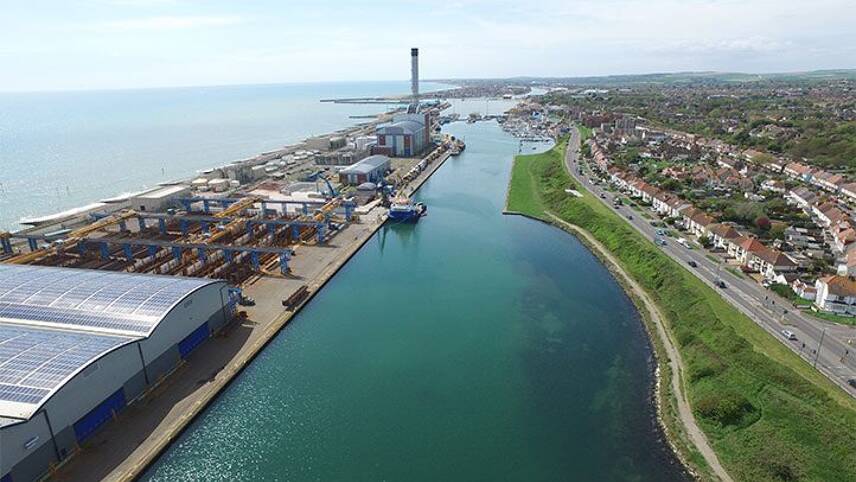Register for free and continue reading
Join our growing army of changemakers and get unlimited access to our premium content

The hydrogen will help to decarbonise heavy vehicles at the Port and
Under the two-year agreement, H2, which is a subsidiary of energy developer and consultancy Getech, will be able to develop new onshore wind and solar power generation capacity as well as an electrolysis facility. There are already onshore wind and solar arrays at the port.
The new facilities will be used to produce green hydrogen which, in the first instance, will be used by the Port’s fleet of 12 heavy goods vehicles (HGVs) and 39 forklifts, which will be converted from diesel. Hydrogen production will then be expanded and refuelling made available to the 800 HGVs that use Shoreham Port daily on behalf of other organisations, as well as to port and coastal marine vessels. H2 Green states that it hopes to be producing 10-15 tonnes of hydrogen daily at this point.
Beyond this phase of the proposed project, H2 Green is planning to develop an ammonia importation facility. The ammonia can be converted into hydrogen on-site or purchased for conversion elsewhere. It will be produced, H2 Green has stated, using large-scale solar arrays abroad, thus bringing down the cost.
Final investment decisions on the project are due in the second half of 2022. Before then, H2 Green will work to finalise engineering designs and will work with the Port to apply for planning permission.
Beyond providing hydrogen to the transport sector, there is the potential for the proposed green hydrogen hub to serve the other businesses at the Port, including timber and steel handling and water treatment. The Port is notably targeting net-zero by 2030.
Getech’s chief executive Jonathan Copus called the plans “a bold vision that will place the Port’s operations at the centre of both national and international decarbonisation innovation”.
The Shoreham Port Authority’s chief executive Tom Willis added: “The project has the potential to make a significant contribution to the net-zero ambitions across South East England through the local generation of hydrogen from renewable energy.
“The hydrogen production process is quiet, odourless and the clean fuel produced will reduce emissions across the region as transport operators convert large fleets to run on it. As a community organisation, we intend to work with all our stakeholders to make this new stage of Shoreham Port’s development a success.”
A growing pipeline of projects
The UK is targeting £4bn of investment in green hydrogen and blue hydrogen – the latter of which is produced using natural gas in facilities co-located with carbon capture arrays – through its Hydrogen Strategy. The Strategy was published in August after a string of delays, with analysts predicting that it will lay the foundations for increased investment in the UK’s clean energy space in the next six months.
In the lead-up to the Strategy’s publication, and in the months that have followed, plans have been revealed for several major low-carbon hydrogen projects. A consortium including The Port of Cromarty Firth and ScottishPower are assessing plans for up to 15 new offshore wind sites, to power a new electrolyser, for example. Separately, ScottishPower is planning to co-locate a 20MW electrolyser with its Whitelee onshore wind farm.
Also in Scotland, TotalEnergies has forged a consortium with Macquarie’s Green Investment Group and Renewable Infrastructure Development Group, aiming to create an industrial-scale green hydrogen plant at Orkney’s Flotta terminal.
As for England, BP is proposing a blue hydrogen production hub in Teesside, while Trafford Green Hydrogen subsidiary Carlton Power is planning an industrial-scale facility in Carrington.
The UK’s National Infrastructure Commission (NIC) has this week outlined its priority focus areas for its next major assessment, listing the delivery of hydrogen and carbon capture networks as a focus area. The assessment will be the first since the UK legislated for net-zero by 2050.
Sarah George


Please login or Register to leave a comment.